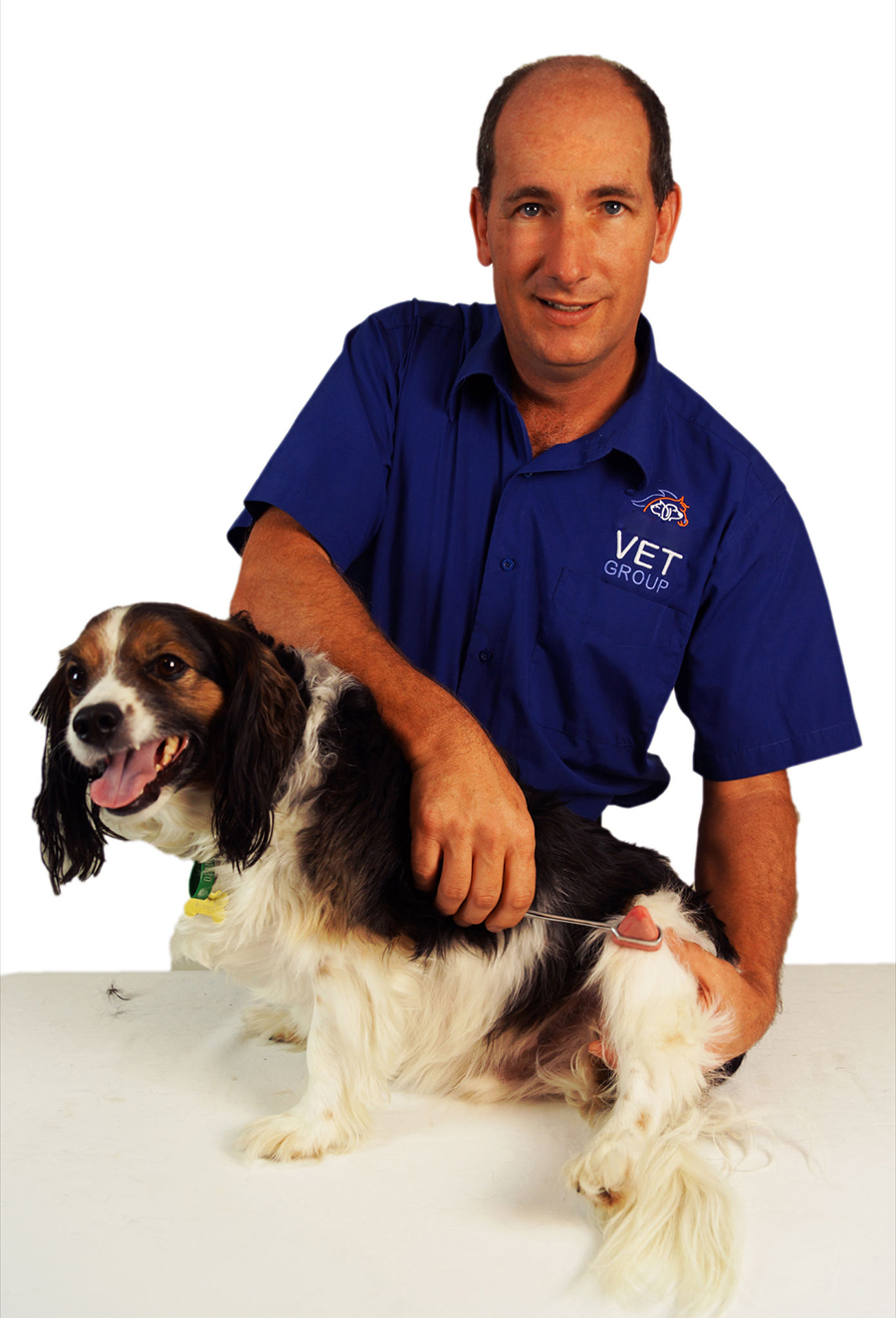Luxating Patella (Slipping knee caps)
Luxating (slipping or dislocated) patellas or knee caps are a relatively common problem in dogs. It is most commonly seen in smaller breeds such as the King Charles Cavalier Spaniel in which it can be an inherited condition. The severity of the problem varies according to a number of different factors such as the structure of the leg, how deep the groove the patella normally sits in is, how long the patella has been riding out of this groove, and any history of trauma or arthritis in the joint. It is always best to have surgery done as soon as the problem is diagnosed to minimise further damage to the joint that will lead to degenerative changes in the joint and arthritis.
Signs of Luxating Patellas
A dog with a luxating patella will often have an intermittent lameness where they will suddenly become extremely lame on a hind leg (often they will carry the leg and ‘hop’ on the other 3 legs). Then just as suddenly they will start using it normally again. This process is often repeated until arthritis develops and the lameness becomes more chronic. However signs will vary between individuals, and a veterinary examination helps to spot other problems which can appear similar.
Available Treatment
Unfortunately most cases of luxating patella will require surgery. There are various surgical procedures used to treat the problem. Some of these are more invasive than others, and the procedure that provides the best stabilisation of the patella with the least surgical trauma is usually used. This will depend on how severe the problem is in each individual patient, and often the veterinary surgeon may need to open up the joint to visualise the joint structures before making a final decision on the type of surgery to be used.
The mildest treatment involves tightening the joint capsule to decrease laxity in the joint. This method can be used on its own, but is more often used in conjunction with other procedures. The more involved procedures involve surgically entering the joint and altering the joint structures. This may entail deepening the groove the patella runs in by taking a wedge out of the femur and replacing the removed groove lining deeper in the femur. The other method involves moving the ligament that attaches the patella to the tibia (the ligament used in testing knee jerk reflexes) so that it pulls the patella into the groove it should run in.
Post-surgical management
Your dog will usually stay in hospital at least one night after surgery so that their temperature can be monitored and any post-operative pain controlled effectively. This also allows us to monitor the surgery site for any post-operative swelling.
All procedures require strict rest after surgery. The simple tightening procedure allows return to normal walking within 2 weeks. However the more complex procedures require bone healing before normal stresses can be placed on the joint. This usually takes around six to eight weeks. The leg will usually not be used for the first one to two weeks, then graded exercise should be started to allow gradual return to normal use. During this time the leg changes from just touching the ground to full weight bearing. A knock to the leg or excessive trauma/overuse can upset the bone healing so your control and management of your pet is very important. Remember we are always here to help if you suffer any setbacks or have any other queries or concerns.




